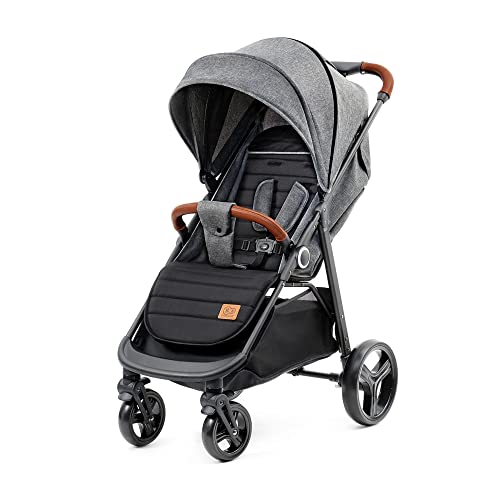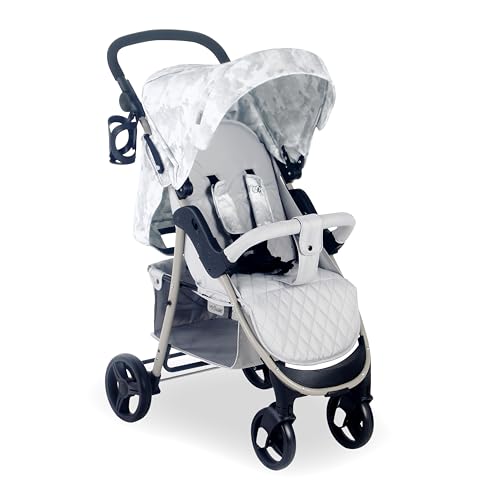 Choosing Pushchairs For Your Baby
Choosing Pushchairs For Your Baby
A pushchair, buggy or stroller is a means of transport for young children. Infants must be able to lie flat, which is why prams come with bassinets or carry cots and some also have a frame that you can fix the cot to.
When a baby is able to exercise good head control and is able to sit up, they can use an infant pushchair that has seats that face away towards or away from you. Many pushchairs come with useful features like swivel wheel or enclosed carrycots that can be used as 3 in 1 systems.
Rear-facing
There are a lot of choices to pick from when you are deciding on a pushchair for a brand new baby. These include prams, buggies, pushchairs and strollers. They may sound similar however there are some important distinctions between them. A pram is typically designed to lie flat, while a pushchair provides a seated position. Some babies can be seated in both, while others need a carrycot to strengthen their necks and head to sit comfortably.
Most experts agree that it is recommended to use a pushchair with a parent’s face for infants as young as a few months of age. Babies are drawn to their parents and the emotional connection that this creates. This eye contact is essential to their emotional development as they begin to process the world around them. As they watch their parents interact with one another and interact with each other, they also begin to develop language skills.
When babies can see their parents and interact with them, they feel an assurance of security and trust. They know they can count on their parents to protect their children and guide them through their surroundings. This early trust can help children grow in confidence and feel well-being when they become toddlers and begin to explore the world.
A pushchair that is positioned for parents lets you easily monitor your child while they are in their seat. You can easily ensure that your child is safe and content. Additionally, you can ensure that their hat is not over their eyes and that the wind isn’t blowing into their face. Babies who are able to see their parents are more likely to fall to sleep, as they feel at ease by the familiarity of their faces.
If you want to keep your baby in a pushchair with a parent’s view for as long as is possible there are a lot of options available. Some pushchairs are able to be switched between parent-facing or forward-facing, while others have an extended footmuff to keep out cold air or a rain cover to shield your child from the elements. The Eezy Twist+2 pushchair is a great example of a multi-purpose pushchair. It can be converted from a parent-facing to a front-facing unit by simply pulling an lever. It can be fitted with an Cocoon S Car Seat, Cot S Carrycot or the carrycot for a four-in-one travel system.
Forward-facing
A forward-facing pushchair lets babies to explore their surroundings and take in the sights, smells and sounds around them. Baby can also view his parents, which is important for social development. Depending on their individual development milestones, most babies will be ready to transition from the carrycot or pram for newborns to a forward-facing pushchair at approximately six months. This is when they will have developed enough head and neck control to be safe in a forward-facing position.
Researchers have discovered that infants who are sitting with their parents while in a pushchair with their faces forward are more likely to speak back and have a lower heart rate which suggests they are less stressed. They are also more engaged in what’s happening around them and their parents, which helps to stimulate their minds and develop their language skills. Parents are more likely to talk to their baby if they can make eye-contact with them. This is soothing and comforting for them.
You can use a pushchair with a front-facing seat since the time of birth. This lets you go for longer walks. It is possible to take your child to the grocery store and other activities that require walking. Additionally, a stroller or pushchair gives your child the chance to observe things that their older siblings are doing which is beneficial for helping them build confidence and self-esteem.
It is recommended to choose a pushchair that has many accessories, including an infant blanket, the footmuff and seat liner. When the weather is hot the hood and a parasol will help protect your baby. Look for a parasol that has an SPF or UV 50+ rating, and ensure it’s designed to fit your pushchair and is easy to attach. Some brands provide a variety of accessories. Some are available together with the pushchair, while others can be purchased separately.
Many pushchairs can be converted to doubles when you add a second seat unit or carrycot. This is especially useful for families who will be expecting another child shortly after the first. Some of these models include everything you require to make the switch and some have an adapter kit that can be purchased separately.
All-terrain
If you live on the country tracks, love walks in the woods, or spend much time hiking, you’ll require a pushchair that’s built to withstand the rough roads and muddy fields. All-terrain pushchairs are designed to tackle any terrain and come equipped with features such as suspension to cushion bumpy rides for your child, so that they don’t get smashed up as much. The seat is angled to evenly distribute the force of the bumpy terrain over your child’s neck and head.
There are many all-terrain pushchairs are three-wheelers. They include the front wheel that is able to swivel and lock into position to allow maximum maneuverability, which is crucial on rough surfaces. They’ll also typically have bigger tires than your average pushchair, which means that they can handle more rough terrain and provide more comfort for your child.
 When looking for a all-terrain pushchair one thing to think about is whether the wheels are foam or air filling. Air-filled tyres feel smoother on rough terrain, but they can puncture more easily when you hit something sharp. Foam-filled tyres are more durable and are less likely to puncture, and this is the best option for a pushchair that is all-terrain.
When looking for a all-terrain pushchair one thing to think about is whether the wheels are foam or air filling. Air-filled tyres feel smoother on rough terrain, but they can puncture more easily when you hit something sharp. Foam-filled tyres are more durable and are less likely to puncture, and this is the best option for a pushchair that is all-terrain.
A lot of all-terrain pushchairs convert from single mode to double for a growing family, and some can even be used as a travel system using car seat adaptors, making them great purchase for parents who are expecting. Certain models, like the Out ‘n’ About Nipper are suitable for infants due to their flat seats and the fact you can use a carrying cot with them.
The Nipper also includes a variety of accessories for pushchairs buggies that include a raincover as well as the footmuff. It has a single-hand fold and is freestanding when folded, which means it’s easy to store. It has a 360-swivel lockable wheels and tyres that are foam-filled, never flat.
Weight
The best pushchair will affect your travel style and the comfort of your child. The best model will allow your child to grow and develop in comfort while ensuring that you enjoy all the family adventures to be. It’s an investment of a large amount, so be sure to check that you pick the one that fits your needs and budget.
Understanding the distinctions between the buggy, a travel system and a single pushchair is the first step. This guide will help parents comprehend the terminology and determine what is right for their baby.
A pram, as its name suggests, is made for infants and babies up to six months old. It allows the baby’s back to develop properly, by allowing them sleep flat. Some models also come with a bassinet attachment that can be used during the beginning of the first few months, providing your baby a secure and comfortable space.
However, you must be aware that not all pushchairs near me that say they can lie flat actually do so. Be wary of claims from manufacturers that their pushchairs can recline flat. Always check the fine print and find out what it really means. Some pushchairs can only offer a small amount of recline, which is more than a seat with a full recline.
Once your baby is old enough to sit up unaided, it’s the time to move them into a pushchair seat. It usually happens between three or four months old, however some infants will begin sitting up earlier. You should buy a pushchair which can convert from a carrycot to a seat. This will give you more flexibility and help keep your child safe until they are able to go forward.
Parents like a lightweight pushchair that has a single pedal to brake, especially if they want to chat or carry shopping bags using their hands. Jessica, our MFM home tester, gave this pushchair a thumbs-up, saying that “it is extremely comfortable and is a comfortable ride, and the one handed fold is a delight”. The lightweight model comes with TruRide tyres, which are durable puncture-resistant and offer excellent performance.
